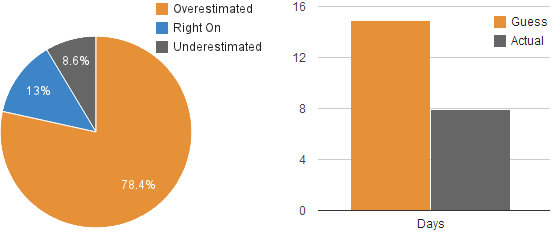
Trends
In a few short weeks, millions of people will make New Year’s resolutions to accomplish goals like running a marathon or learning Spanish. Full of optimism, they’ll buy Nikes and pocket translators, yet most will give up within a month. But what about skiers? Many resorts ask their skiers “how much do you expect to ski this winter”, but how do the numbers compare after the season ends? That’s what we found out.
The Goods
Let us first say that these numbers are early and hardly definitive. The sample was small but, as is, the takeaways were fascinating. Keep in mind also that these surveys were taken in January and February, not November, so season passholders weren’t blindly guessing at the season ahead.

It turns out that a whopping 78% of passholders overestimated how many days they would actually ski, 9% underestimated, and 13% skied the exact number they guessed.
The gap between guesses and actual was interesting as well. On average, passholders expected to ski around 15 days (well above the threshold that would make them highly likely to return). Yet, by season’s end, each skier averaged only 8 days on the mountain – 46.5% fewer days than estimated.
What This Means
If we stay on the theory/parallel of resolutions, we’d assume that at some point each of these skiers expected to, wanted to, and were willing to make 15 trips to the mountain that year. However, just like running or exercise goals, few people actually do what they set out to do.
The opportunity here may lie in providing small pieces of automated support to help them accomplish their goals. Like a friend who is expecting you to be dressed and warmed up for a run at 6am, providing simple, extra reasons to get on the mountain could help them reach their goals, get full use of their pass, and be much more likely to renew as the season comes to a close.